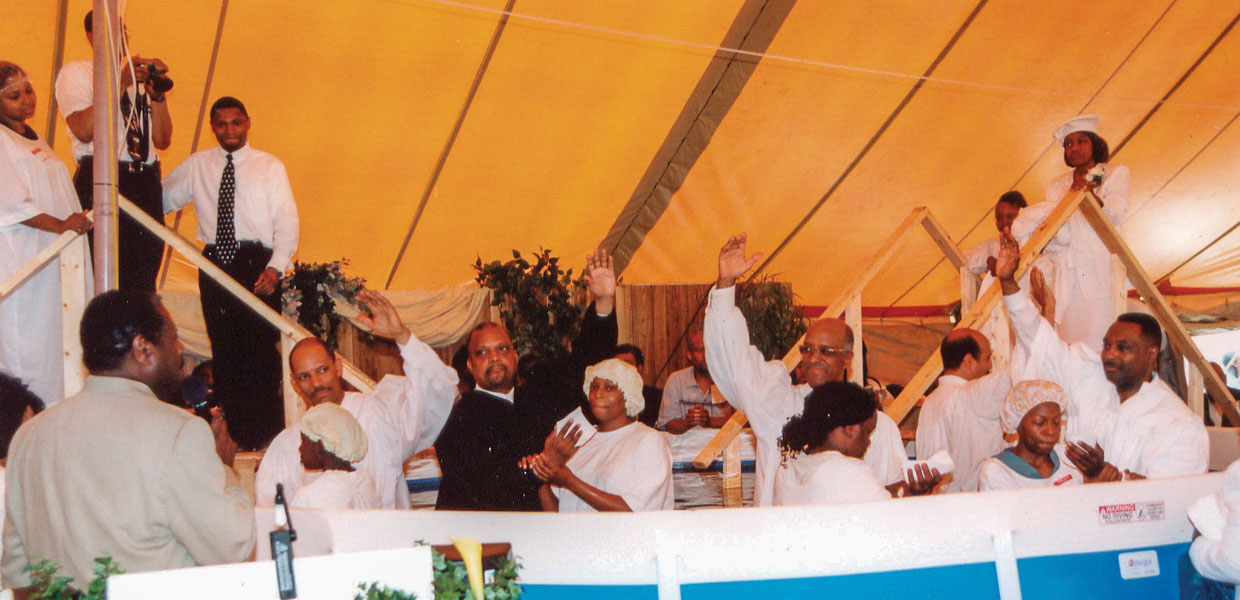
Steven Norman
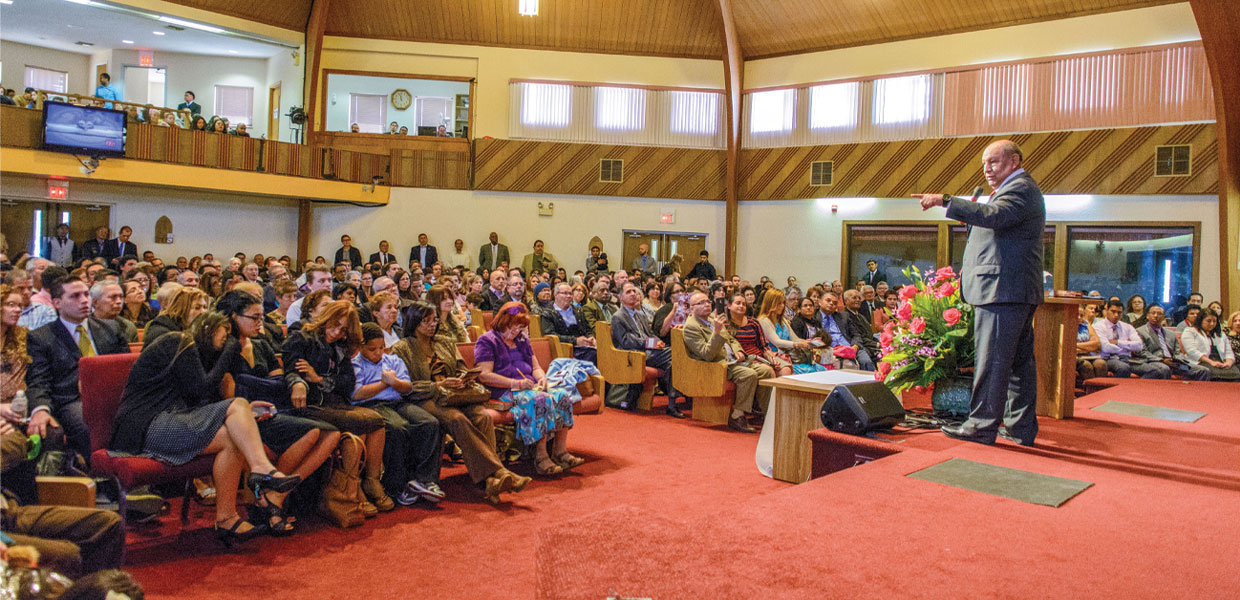
Steven Norman
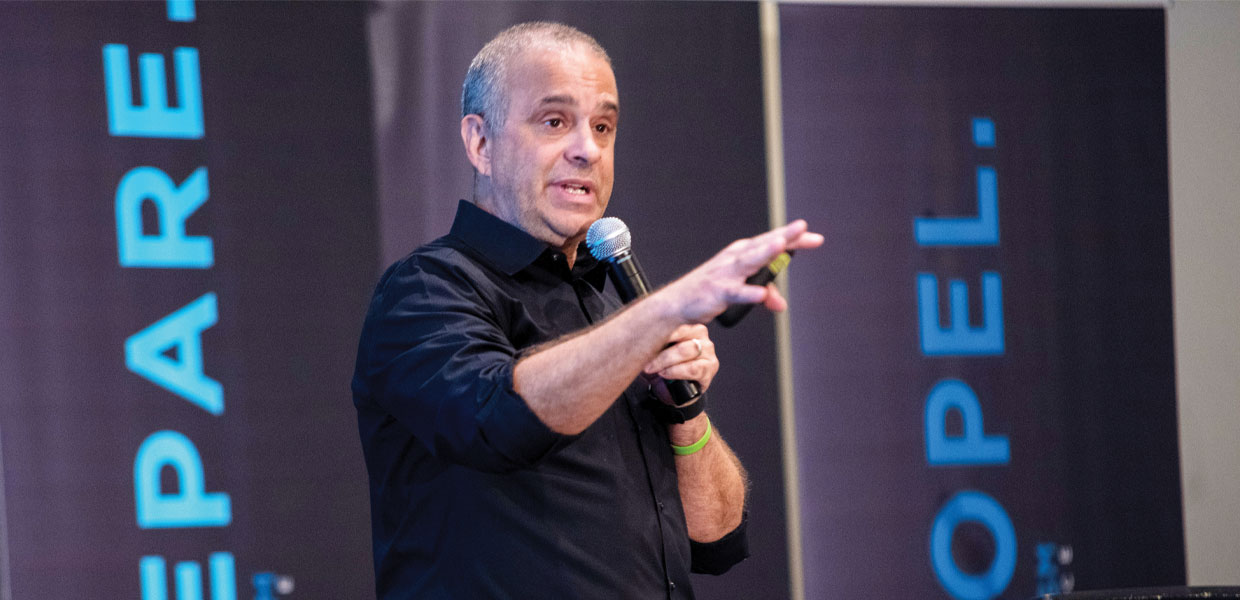
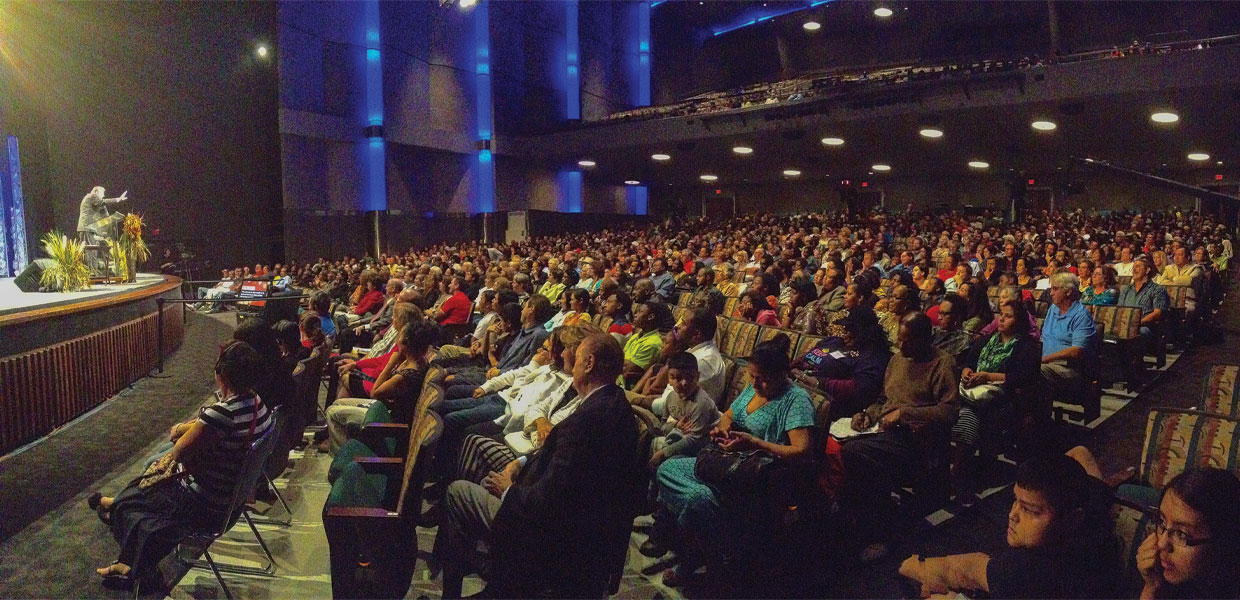
Ron Quick
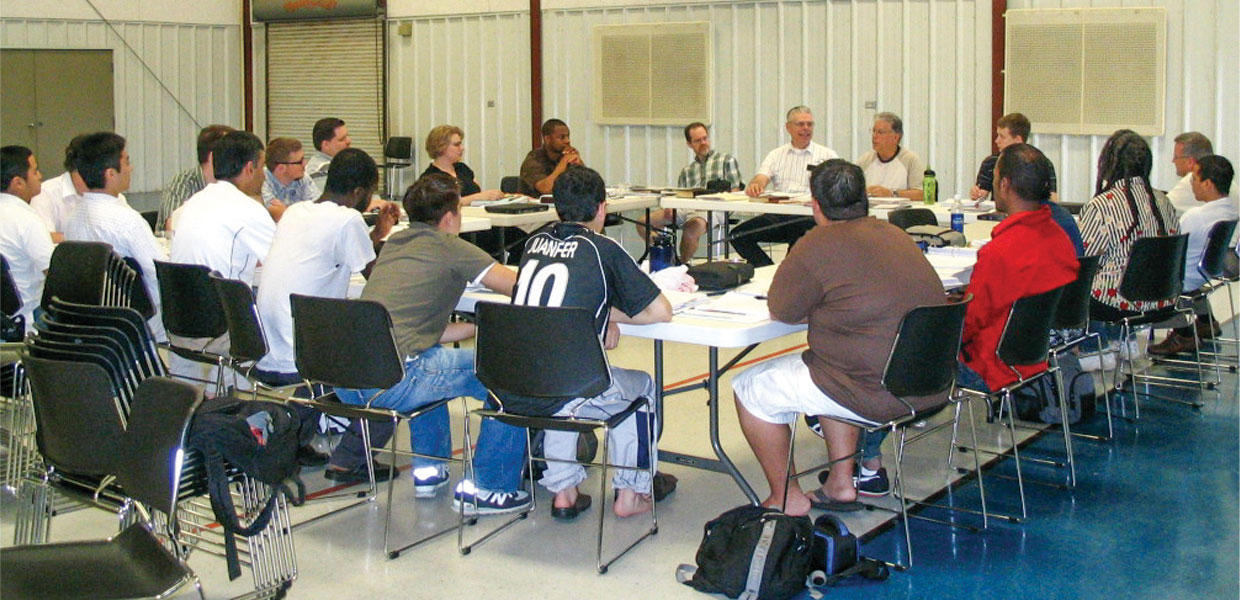
Steve Norman
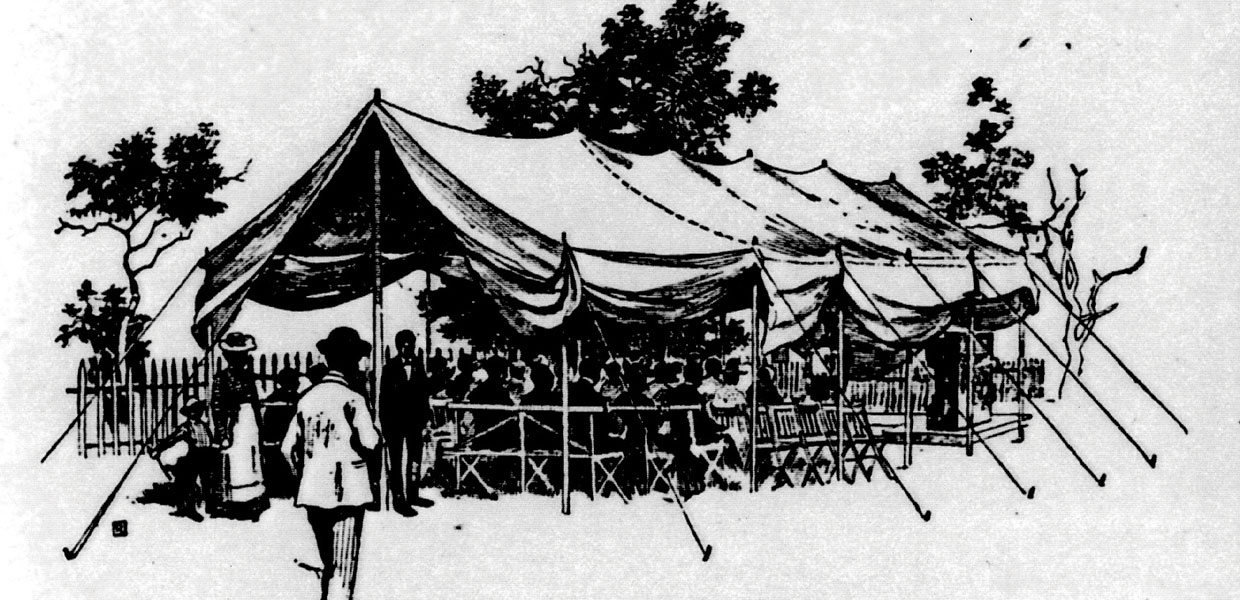
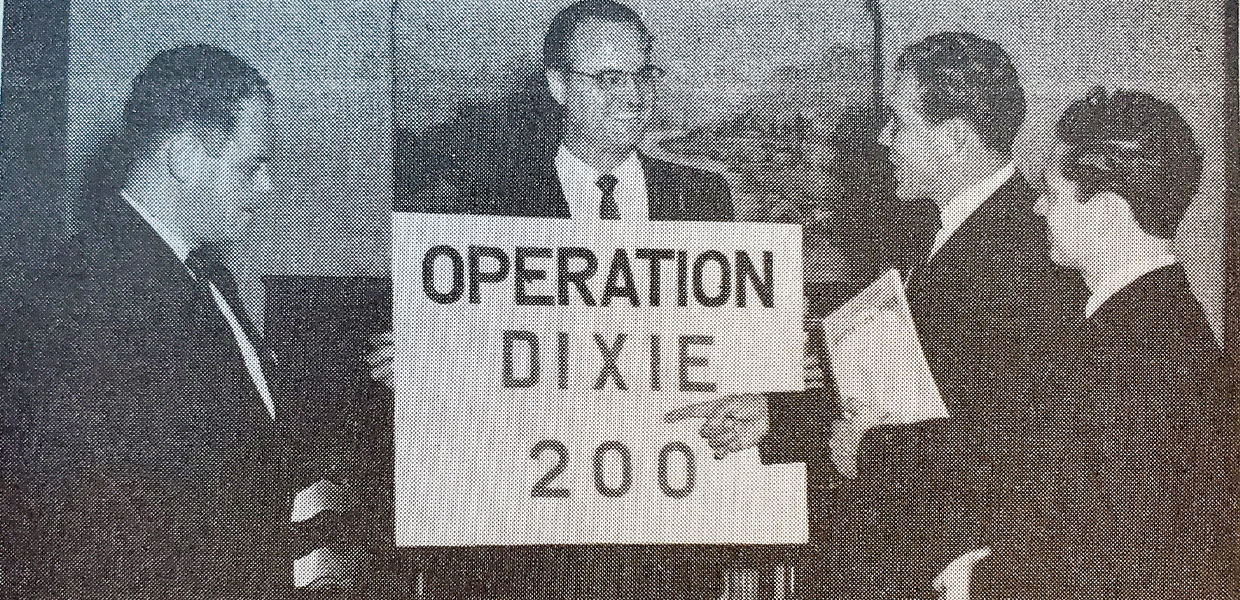
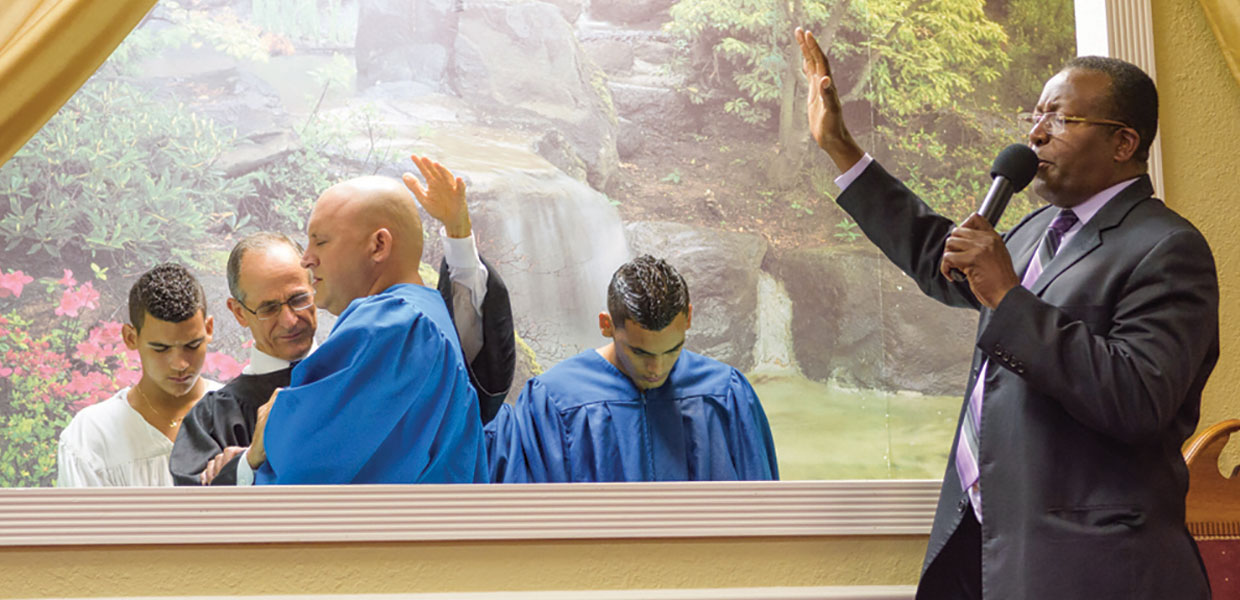
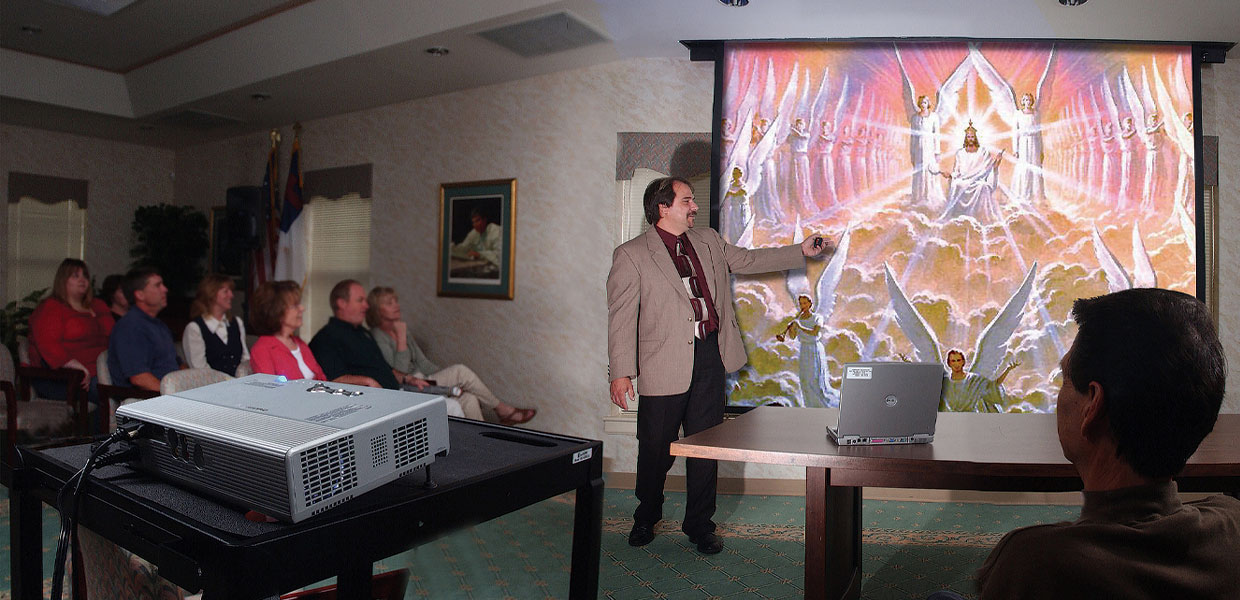
Ron Quick
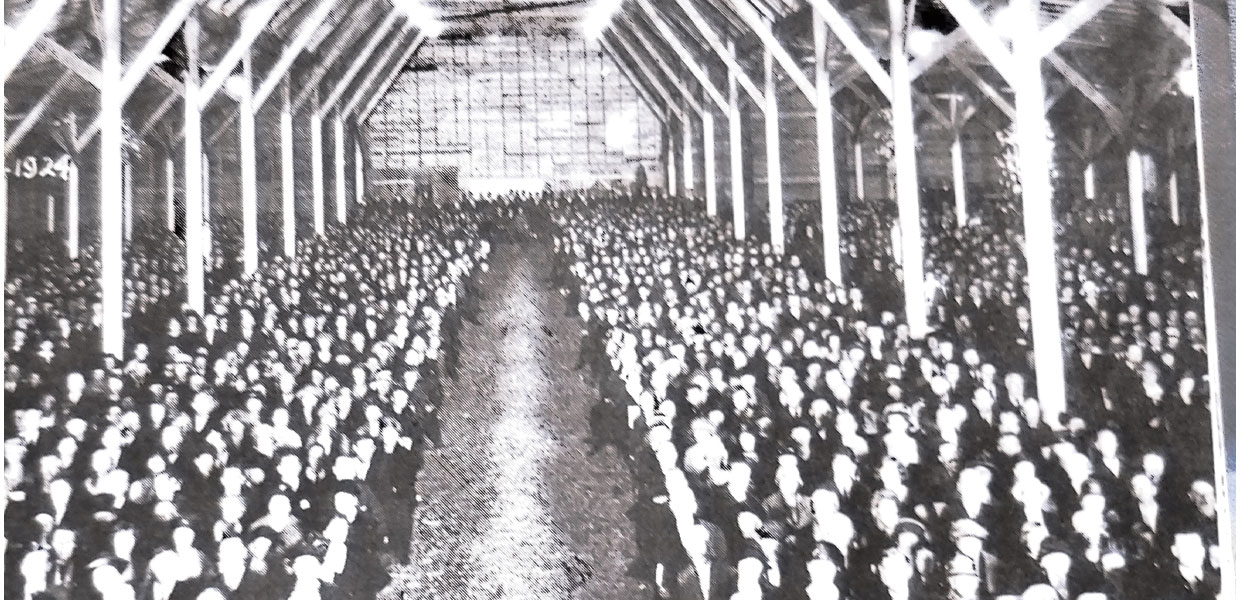
A historical overview of the methods of teaching and doing evangelism
The First Evangelistic Meetings Held in Southern Union
The first meetings were in April of 1871 by Elbert B. Lane at Edgefield Junction, Tennessee (just north of Nashville), in the railroad depot. It was a meeting for everyone, but whites met in one room and colored in another room. The crowds overflowed to the freight room and platform. Five were baptized and a bi-racial church was started, the first Seventh-day Adventist Church in the Southern Union. A Black Baptist minister, Harry Lowe, was one of those baptized. Lane came back in 1873 and increased the church membership to 13.
The Big Challenge for Evangelism in the South
It was shortly after the Civil War and southerners were distrustful of northerners and northerners were reluctant to go south to hold evangelistic meetings because it could be dangerous. Feelings were still raw for many on both sides of the Mason-Dixon line.
Evangelists Were Church Planters
Most evangelists held meetings in places where there were no churches. Evangelists for many years pioneered the Seventh-day Adventist Church work in most areas in the South.
Union and conference leaders were evangelists holding meetings. They held meetings in new areas to plant churches, and they held meetings where churches had been planted to build them up. They also held meetings where a few or even a single member lived, to try to plant a church there. Many times they would use a member’s home to hold these meetings or a school, hall, or tent.
Camp Meetings and Conference Constituency Meetings were connected with and held where they wanted to hold an evangelistic meeting to build up a church or plant a church. They would bring in a big tent for these meetings, hold their meetings during the day, and have evangelistic meetings at night. They would leave the tent there to continue the evangelistic meetings.
Literature evangelists were key in spreading the message to prepare an area for meetings. Also, they helped to follow up the meetings. The Watchman and Signs of the Times were used widely in evangelism.
The Report of Progress, the forerunner of the Southern Tidings, started July 2, 1907. Literature evangelism and evangelistic meetings were highlighted. It also covered the news for the Southern Union.
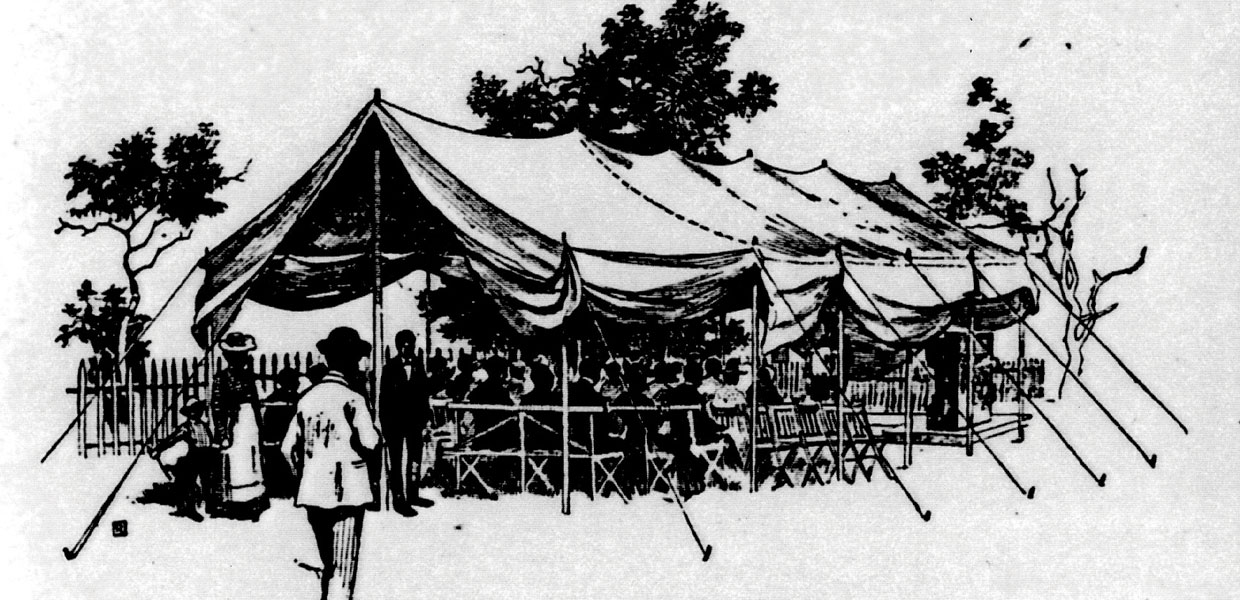
Early Methods
W. H. Granger’s tent meeting in 1907 used house-to-house work of giving everyone in the community the Family Bible Teacher Lessons, which were summaries of the previous night’s sermon. Bible workers would deliver the lessons to everyone in the community and invite them to the nightly meetings, which built the attendance, and most said they would read the lesson. Thus, they reached the entire community with a message that could help plant a new church or help grow a church.
Bible workers were used in preparation, during, and as follow-up of evangelistic meetings. They gave Bible studies which helped prepare for the meetings. Their work increased baptisms during and following the meetings. They helped plant churches and helped stabilize new members.
New members became foot solders for evangelism. They were trained to give and sell literature, visit, give Bible studies, and assist in evangelistic meetings.
House meetings were a common place to hold meetings, especially where there was no church building. The house of a member or a willing interest was used when it was in an area they wanted to plant a church.
Tabernacles were built for winter evangelistic meetings and when halls were not available or too costly. Many times, when the meetings were over, they used the lumber of the tabernacle to build a church. Three- to 12-month meetings were often used to plant churches.
Lay evangelism persons were trained to hold meetings. In some places the number of lay meetings equaled or exceeded the number of meetings held by ministers.

Later Methods
Bible School was launched in 1950 in the Southern Union Conference by E. L. Cardey.
Fordyce Detamore’s three-week meetings included intense pre-work of getting names of former and inactive members, family, and interests. He used extensive visitation and calls that gave the Holy Spirit plenty of time to reach the heart.
Earl E. Cleveland preferred the “long campaigns,” 12 to 14 weeks. He said, “It provided greater opportunity to win those who may initially resist.” He believed meetings should meet the needs of the whole person; therefore, service to the community, with food, clothes, and medical care to those in need, was part of his meetings.
Operation Dixie was a Southern Union evangelism program during 1959. It involved all 435 churches in the Southern Union. All departments and members were involved with their pastor in the pre-work, and the revival/decision meetings.
Mission 72-77 had all churches in the North American Division (NAD) hold a coordinated evangelistic meeting with materials provided by the NAD, and involving all the departments of the Church.
Revelation Seminars was a seminar style of doing evangelism that a great number of pastors and laypersons used.
Kenneth Cox used a four-screen multimedia presentation, music, and organized visitation with emphasis on Gospel presentations.
Les Pratt preached warm, heart-warming sermons that uplifted Jesus, using only the Bible and visitation to build relationships.
ShareHim trained laypersons to hold evangelistic meetings. The original idea from Robert Folkenberg was training laypersons of all ages to hold meetings in countries where the Church was growing fast and evangelism was exciting. They could experience God’s power, then bring back that experience and do evangelism at home. Later there was emphasis on homeland meetings with “bootcamps” training laypeople to prepare for, hold a meeting, and follow up with discipling new members. ShareHim, begun in Carolina Conference, still is a ministry there, and has impacted and been shared with the rest of the NAD.
Roger Hernandez —Found new methods during the pandemic to do social media evangelism via Zoom, YouTube, and Facebook.
Field Schools for Evangelism for Students
Oakwood College’s (now Oakwood University) first Field School for Evangelism was held July 1907. It was held in connection with summer school in tents in Huntsville, Alabama. The Field Schools have continued to train pastors and future pastors to do evangelism. Some of the greatest evangelists in the Seventh-day Adventist Church have been involved in them, like Earl E. Cleveland. Currently, Jesse Wilson, D.Min., is the leader.
Southern Missionary College (now Southern Adventist University) started holding Field Schools for Evangelism shortly after its founding. Various professors were involved in the Field Schools. Bruce Johnston was an outstanding evangelist, and was one of those professors that held many of Southern’s Field Schools. The Southern Union was always involved, but got more involved when Ron Halvorsen was called to the Union in 1986. He, along with a professor from Southern, led out in the Southern Union Southern Adventist University Field School for Evangelism for 17 years until he retired. Ralph Ringer took Halvorsen’s place at the Southern Union, who, with Carlos Martin, Ph.D., from Southern, and Halvorsen, started a new method. An experienced evangelist would teach students and preach a series, and the students would preach in churches in the area at the same time. Roger Hernandez now works with SAU in its Field School.
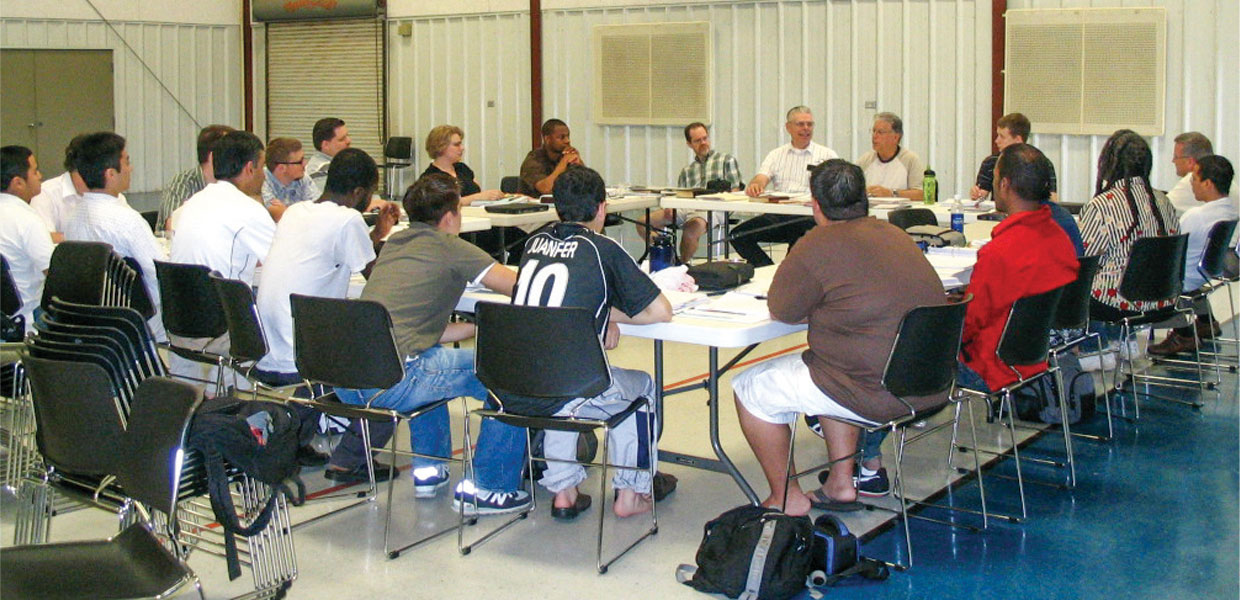
Evangelists Held Field Schools for Pastors During Their Meetings
J. L. Shuler had Double-Header Sunday nights with reserve tickets in Raleigh, North Carolina, November 1932. People filled the hall, and 200 new members were brought in where no congregation had existed. He held a Field School in 1937, in Greensboro, North Carolina, for young pastors. Shuler’s book, Public Evangelism, was published in 1939, and was used to help so many of the evangelists from that day until today.
Fordyce Detamore held daily classes for two or three hours for pastors to inform and train them in his three-week series. He also assigned them names of those attending to work and visit with.
Earl E. Cleveland always had a burden to train and mentor pastors in evangelism. He trained and mentored hundreds of pastors, including Charles D. Brooks (both were natives of the Southern Union). In his meetings he gave pastors “on the job training in evangelism.” When he was a Southern Union evangelist, 1950-1954, he also held classes on evangelism, called by the Union, including an evangelism council. He taught pastors of all races about evangelism. He continued this training when he moved to the General Conference, and for the rest of his life.
The basic method of Spanish evangelism was and is small group Bible studies, followed by one-week reaping series at the church. There were four new strategies Jorge Mayer, director of Hispanic ministries for the Southern Union, brought in: 1. “Festival of the Laity,” where laypersons were trained, motivated, and equipped to do personal and public evangelism. 2. Reaping Caravans, where a well-known evangelist goes from church to church to give a sermon to get decisions for baptism and hold baptisms. Later there were two Caravans per year, one early in the year to train, motivate, and equip; and one later in the year to reap. 3. Three outreach movies were made: “The Window,” to bring people to Christ; “The Return,” to bring back former members; and “Marked for Death,” for decisions for baptism — 10,000 to 20,000 each in the Union, and 60,000 in the NAD. 4. Youth Congresses, are held Thursday through Sunday for the youth. They are asked to get their friends (non-members) to come with them to Youth Congress, and see on-the-job training bringing youth to Jesus and discipleship. The Southern Union pioneered these four, and most of the NAD has adopted them.
The outreach to Jews uses a new method marking the feasts of Leviticus. We make friends with them; invite them to join in the celebration, which all points to the Messiah; and then study the Scriptures with those who are interested.
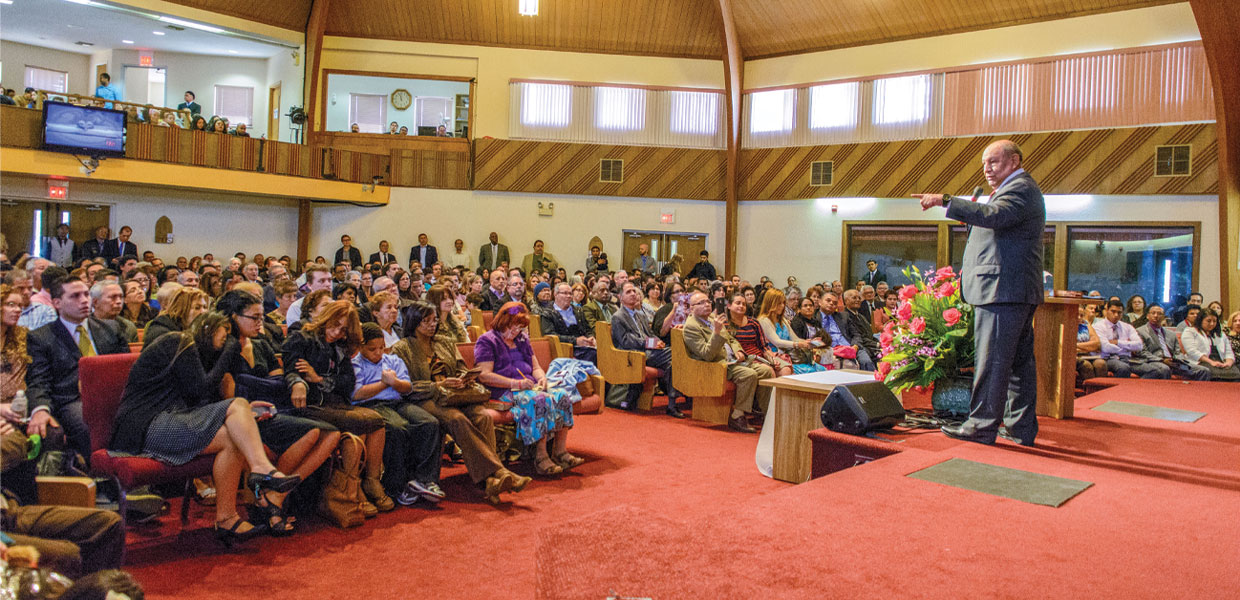
Southern Union Evangelism Council (Now EC3)
The Southern Union had evangelism councils from time to time, but it wasn’t until 1970 that the annual Southern Union Evangelism Council was started by Harold Metcalf, then ministerial secretary. It was for full-time evangelists, to inspire, give training in many areas to help them be more effective evangelists, show them the latest technology, and bring in professors and scholars to help the evangelists to be true to the Bible and grow in their scholarship. There was also time for evangelists to share what they were doing and have fellowship with other evangelists. The evangelists were honored for their work.
Ron Halvorsen took over leadership in 1986. He continued most of what was being done at the Southern Union Evangelism Council (SUEC), but he brought some changes. The most notable change was that he opened the SUEC to pastors who were interested in evangelism.
In 2003, Ralph Ringer took over leadership of the SUEC. He continued what the SUEC had been doing, but broadened it. The target attendees were evangelists, pastor/evangelists, lay evangelists, and administrators interested in evangelism. New services were added, such as a free professional portrait for their handbills, for all who attended.
In 2015, Roger Hernandez took over leadership of the SUEC. It was renamed EC3, an acronym for the Evangelism Council, the 3 is for the three “P’s,” Preparation, Proclamation, and Preservation. It is the only annual meeting that focuses solely on evangelism.
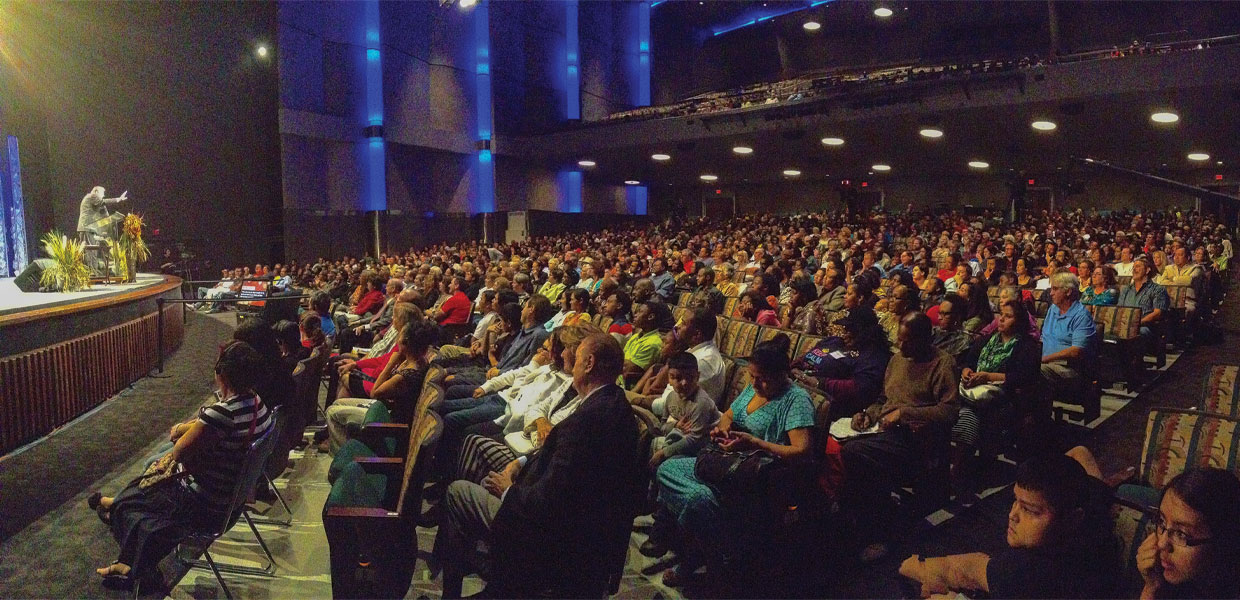
Oakwood Evangelism Council (Now PELC)
Earl E. Cleveland was the major force in its birth and growth. It was designed to inspire, train, and equip Black pastors in evangelism. It was broadened to also cover other areas of ministry and all pastors. Therefore, the name was changed to PELC, Pastors’ Evangelism and Leadership Council, and it is led by Jesse Wilson, D.Min.
Radio and Television Evangelism in the Southern Union
It Is Written (IIW) and Mark Finley presented NET ’95 in Chattanooga, Tennessee, in February 1995, and uplinked live via satellite to 676 churches across North America, resulting in more than 5,000 baptisms. A second series, NET ’96, was uplinked from Forest Lake Academy in Apopka, Florida, in October 1996. There were 1,900 churches involved in the NAD with 17,000 baptisms.
Under John Bradshaw’s leadership, IIW, partnering with Southern Adventist University, started SALT (Soul-winning and Leadership Training School), a Bible worker and evangelism training program in 2011, as well as online resources for evangelistic training called SALT365.
In 2014, IIW relocated to the Chattanooga area and continues its involvement with the Southern Union.
Breath of Life (BOL) was started by evangelist Charles D. Brooks in 1974. During the 23 years he led BOL, the ministry had 15,000 baptisms and planted 15 Breath of Life churches. Breath of Life’s current speaker/director is Carlton P. Byrd, D.Min. He is the lead pastor of the Oakwood University Church, while leading BOL and holding evangelistic meetings in the Southern Union and world.
Other media ministries not based in the Southern Union territory include the Voice of Prophecy, Faith For Today, 3ABN, and Amazing Facts. These ministries have helped the Southern Union grow through radio and television programs, evangelistic meetings, and Bible School.
is the director of church growth/evangelism training and Jewish Ministries at the Southern Union Conference.
Southern Union | June 2021


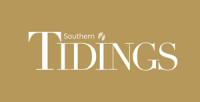
Comments are closed.